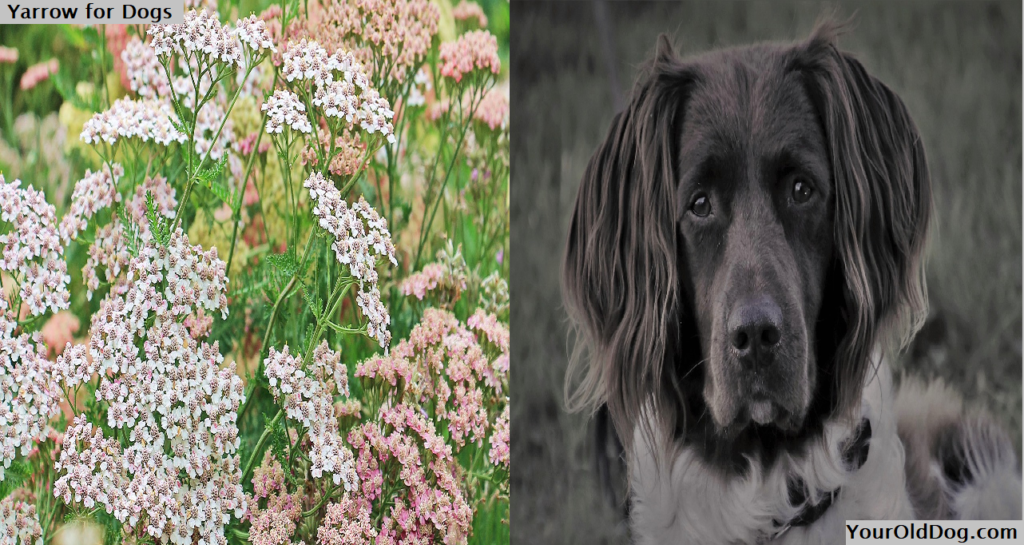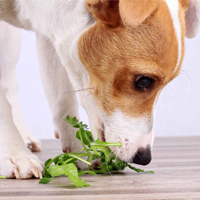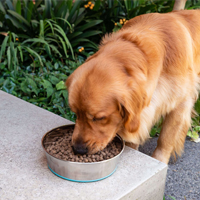
Yarrow for Dogs and How To Safely Use It
Yarrow is a perennial herb generally native to Europe and Asia, but it can be found alongside roads in many regions of the world. It remains in bloom throughout the spring and summer months and has a strong aroma often compared to mothballs.
In this article, we’ll be checking out some of the benefits of yarrow for dogs and explore how you can safely use this natural herbal treatment for your own pet.
Yarrow is usually identified by their yellow, red or peach flowers and is sometimes known as stanchweed or soldier’s woundwort.
Old Man’s Pepper is used for a number of applications, including as an antiseptic, analgesic, an expectorant, anti-inflammatory, and even an insect repellant.
It has also been used to lower blood pressure and promote sweating, while some have noted applications as a diuretic.
Therapeutic Use
Yarrow’s flowers, leaves and stems are used to create treatments in formats like teas, tinctures and oil infusions.
- Yarrow got its “soldier’s woundwort” nickname because it was used by warriors on the battlefield to stop bleeding and disinfect wounds. It was also used on horses for the same purposes.
- A powder of the dried or fresh plant can be used to treat open wounds and even foot pad lacerations. The herb should be crushed as fine as possible and applied directly to the open wound.
- A cool tea of yarrow has been used as an itch and pain reliever and skin rinse. It is also believed that this rinse can be used to repel flies, mosquitoes and even flies due to its aforementioned aroma. Directions for rinse: The tea can be made by using one teaspoon of dried yarrow with one cup of boiling water. It should steep for about 10 minutes and cool before use.
- Yarrow can be taken internally to help aid in circulation to skin and arms and legs. This can also be done with the tea recipe above or a tincture. The tea can be served with about a one tablespoon dosage. Some have reported using one or two strands of fresh yarrow in a salad, although the bitter taste may dissuade your dog from consuming it.
- Yarrow is one of the first herbal treatments used by holistic vets for treatment of pneumonia because of its properties at aiding in healthy circulation. It can help eliminate microbes and foreign bodies from the lungs and has been noted as being useful in early stages of kidney infections as well.
Click here to buy Organic Yarrow
Preventative Measures
The ASPCA lists yarrow as a toxic plant, but poisoning from this plant is rare. Tannins in yarrow give it a bitter taste and dogs are usually instinctively discouraged from consuming too much of it should they locate it by the side of the road.
Pets would have to consume an extremely large amount of yarrow in order to be poisoned by the plant.
Symptoms of yarrow poisoning are generally limited to the digestive system and consist of vomiting or diarrhea. Some pregnant animals have miscarried because of yarrow usage, however, and animals who are nursing should not consume it just to be on the safe side.
There also have been reports of dermatitis and other skin allergies in some dogs after yarrow usage, so it’s best to limit its usage to topical applications.
Discontinue use if any symptoms arise.
Reasons to Use
Yarrow really is one of those magical herbs that seems to treat a whole bunch of things at once. Its healing properties are extensive and its benefits in a number of applications can’t be overstated.
Its broad usage potential makes it a favorite among herbalists and holistic veterinarians everywhere, so it definitely should be part of your repertoire.
References: Herbs for Pets by M.L. Wulff-Tilford and G.L. Tilford, Natural Remedies for Dogs and Cats by CJ Puotinen










